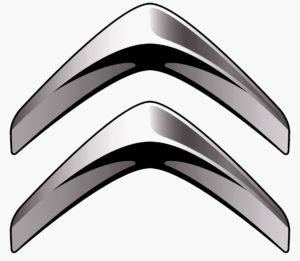Forum Replies Created
-
AuthorPosts
-
John
I may have something for you. Someone in the US has parts. See photo below. You need to email Paul Anderson using ‘citparts@gmail.com’. He bought the old Brad Nauss business, so trades under that name.I’m told that there are backing plates for slightly later Lucas lamps that fix to the plates with three screws. yours clearly seem to be the type where the light fixes to the plate with just two screws. i don’t know whether one could be adapted in place of another, but just bear that difference in mind if you are picking and choosing parts. Paul can probably advise you.
Just be grateful that it’s a slightly older car and you didn’t need to source ‘gris rose’ coloured shrink wrap.
I’ll put some feelers out in the USA.
paul
Another thought. Are your lights the same as the ones used in the US/ Canada? If so, you might find a better condition pair of plates there. I can put some feelers out for you if it helps.
You may already have seen this:
https://www.seattlecitroen.net/sedan-taillight-summary
Are your lights the ‘Lucas with screws’ ones?
If everything is rusted and weakened I would:
(1) replace the ‘U’ shaped straps with new metal and
(2) fabricate a simple flat backing plate and bond it on with a layer of a sikaflex product to negate capillary action/ rust between the layersThanks for the explanation. I’m now thinking you mean the metal backing to the lights themselves – not the large plinth that they, and the number plate bolt to.
making fake recaps seems big business these days. Are you sure the part you need is not available as an expensive poor quality, ill-fitting repro? Perhaps, like me, you try to avoid repros at all costs, but it’s worth exploring if you have not done so already.
I’m not sure what you are trying to achieve here.
If it’s build up extra strength then (without seeing them) it’s difficult to see how 0.5mm is going to make a lot of difference.
Plating only adds a layer a few microns thick and usually needs an acid dip first to get back to a good/ clean surface.
My first thought is to use a spot welder to add some reinforcing pieces in selected areas – but I probably misunderstand where metal is needed where and what the part looks like.
can you put up some pictures?
Great result!
Being an efi car, did you ever find out where your temperature warning/ panic light was actually fitted? If not, you need to check all the likely spots and see if there is a sensor and wire connected. You need to rule out the EFI cold start and thermal sensors – plus the one you’ve just wired up. If you find another (fourth?) sensor, it’s easy enough to run a new wire back to the dash and that white socket. Other than a continuity test, i’m not sure how you’d confirm it works.
Hi
That’s an interesting discovery and your conclusion sounds promising! Keep us informed as it’s quite a mystery.TEST – testing the functionality of the forum(s)
Brilliant progress! I remember the photo you posted soon after you’d bought it – a big LHM stain on your drive from a leaking suspension boot.
I guess it’s all down to bulb and filament size? Indicator bulbs get a hard time, but being bigger and brighter they maybe have a thicker filament wire and so are more resilient?
I’ve asked around and Badabec and at least one other have said that, on a 12v system, a 24v bulb should last longer.
When i though about it, both bulbs get switched on and off a lot: the green indicator warning light flashes on and off with the indicators, and the high beam warning light might be switched on and off a lot as you are forced to switch from main beam to dip beam. Perhaps by being 24V the bulb filaments are less likely to weaken and blow?
Well I’m blowed! has anyone got any idea why two bulbs in my speedo should be 24V bulbs?!? It’s the bulbs for the blue ‘high beam’ light and the bulb for the indicators.
I’m convinced it’s not a typo. They are listed as 24V in the Citroen repair manuals (English 814, plus the French and German versions of 518) and also in the 1966 parts manual.
I took out my bulbs… and they are indeed 24V!
There seem to be several lengths and diameters for these over the LHM years and depending on whether the car is bvh or bvm. For my car, the dimensions are given as 7mm x 14mm (ID x OD) suggesting it’s one diameter from regulator to the three way union (that my car also has). It’s also meant to be 1070mm long.
But that was when the cars had aluminium regulators. Mines had a later steel replacement regulator fitted and so I suspect one end of the hose was changed to a larger internal diameter to accommodate. the hose was also re-routed and so only needed to be about 800mm.
I’ve got a couple of NOS pipes with reinforced ends that fit a steel regulator. Trouble is, they are only 800mm long. I’ve spliced-in an extra length of regular 7mm ID LHM hose to join it to the union down under the reservoir. I just used a piece of steel tube about 8cm long and shove it well up each pice of hose then clamp it up.
-
AuthorPosts





